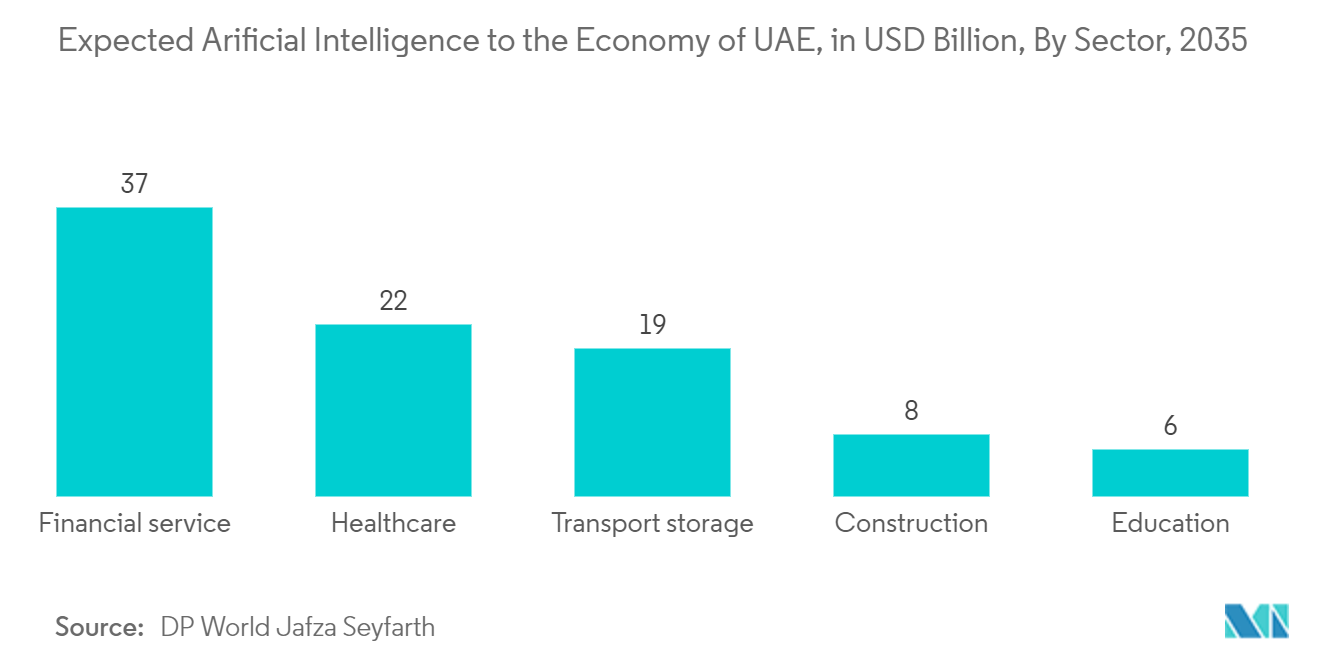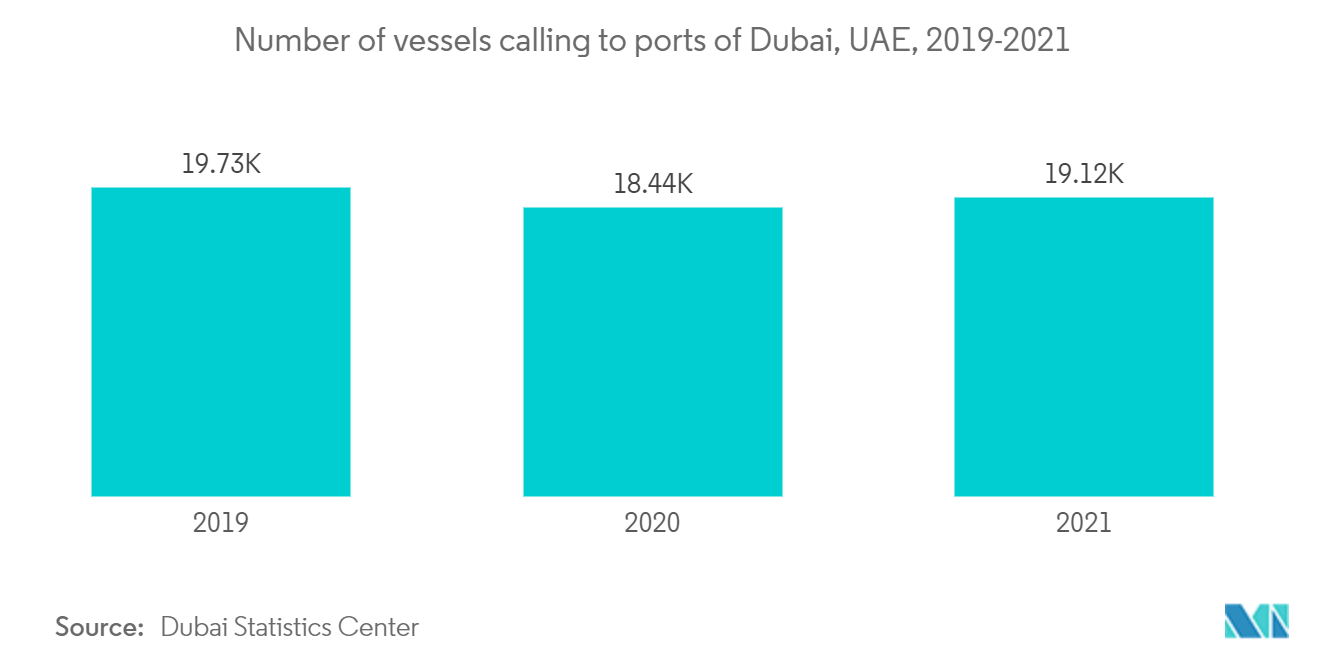Market Trends of UAE Satellite Communication Industry
Growing IoT Applications and Technological Advancements in Various Industries
- Various end-user industries in the country are going under significant digital transformation over the past few years with the adoption of advanced technologies and IoT. Modern-day businesses and organizations rely on IoT to enable intelligent data conversations, helping them track, monitor and manage assets, ensure the safety of their workers, and improve remote operations. This has led to significant adoption of satellite communications in IoT applications.
- Moreover, various sectors and industries in the country are rapidly deploying advanced technologies such as Artificial intelligence, Machine learning, etc., which is expected to drive the demand for satellite communication in various end-user industries over the forecast period. For instance, according to DP World; Jafza; Seyfarth, by 2035, AI's contribution to the economy of the United Arab Emirates in the financial services sector is expected to be USD 37 billion, followed by USD 22 Billion in healthcare and USD 19 billion in transport storage.
- Further, the country's oil and gas sector is witnessing significant adoption of IoT and other technological advancements, requiring satellite communications solutions. Oil and gas sector business operations extend to geographically remote environments and depend on satellites to provide the critical communication means for remote facility monitoring and real-time asset management at unmanned sites and offshore platforms.
- Market vendors are launching innovative solutions in line with the increasing IoT applications across various industries in the country. For instance, in May 2023, Thuraya, the mobility arm of the UAE's flagship satellite solutions provider, Yahsat and eSAT Global announced to complete an over-the-air demonstration of a low-latency, direct-to-satellite IoT texting system by transmitting low-power IoT messages over Thuraya's satellite network (Thuraya-2 Satellite 'T2').

Maritime Segment is Expected to Witness Significant Growth
- Satellite communication in maritime applications has become vital, demanding customizable satellite products that provide signal transmission and reception for military, commercial, and recreational applications worldwide. The country's maritime sector is also witnessing substantial demand for satellite communications, with market vendors gaining contracts.
- For instance, in March 2022, Yahsat, Al Yah Satellite Communications Company PJSC's government division, Yahsat Government Solutions (YGS), announced the signing of a Memorandum of Understanding (MoU) with Al Seer Marine PJSC, the region's leading maritime company, to test line-fitting unmanned vessels with advanced Comms-on-the-Move (COTM) satellite communications solutions. The agreement will allow Al Seer Marine to capitalize on Yahsat's significant experience in providing highly secure satellite communications services for mission-critical safety and security applications such as COTM and Beyond Line of Sight (BLoS).
- Maritime connectivity has become crucial in the shipping industry as the pressure for operators to meet commercial demands increases. The increasing demand for vessel monitoring in the country's maritime industry is further augmenting the growth of the market at a rapid pace. For instance, according to the data from the Dubai Statistics Center, in 2021, 19,123 vessel callings to the ports of Dubai in the United Arab Emirates (UAE). This was an increase from 2020, in which there were 18,144 vessel callings to the ports of Dubai.
- Moreover, communications in the maritime industry must withstand harsh environmental conditions and provide agile, flexible, and reliable connectivity because of the ships' remote locations, which can be made possible through satellite. Hence due to a broad range of applications in the sector, the Maritime industry is expected to provide substantial demand for satellite communications over the forecast period.


